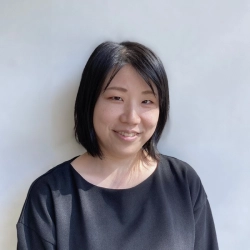
Momoka Hirai
National Rehabilitation Center for Persons with Disabilities, JapanTitle: Active modification of spaces by people with visual impairments
Abstract
Background: The number of people with visual impairments worldwide is increasing as the population ages. Autonomous navigation improves with experience, so it is essential to support individuals during their initial encounters with spaces. Thus, the authors have developed a floor tape, that can be easily carried by them and can be used as landmarks, as it can be easily pasted and peeled off. The tape is 48 mm wide and 6 mm high, with protrusions on both edges. This study aims to identify their needs regarding the active and temporary modification of spaces.
Methods: A total of 19 people participated in the product trial and were interviewed. The author gathered photos of how they used the product.
Results: 1) People with visual impairments would like to indicate their room in a hotel or hospital, mark the stage at a concert, or indicate their seat in a soccer stadium or their office.
2) There are three meanings of the active and temporary modification of spaces. First, it helps to improve the efficiency of environmental awareness during temporary stays and to personalize frequently used places. Second, it is to avoid danger and mark places. Third, it is to provide guidance and represent boundaries and areas.
3)The method of placing markers was tailored to the individual’s movement characteristics, like how far away from the wall the person usually walks.
Conclusion: Although there is much to remember in a new place, externalizing the memory by attaching landmarks reduces the cognitive load. People with visual impairments have various needs for actively modifying spaces, and simple markers were found to be useful for understanding the environment. It would be beneficial to consider integrating it with information devices
Biography
Momoka Hirai has completed her B.Ed and M.Ed from Tohoku University, Japan in 2011 and 2013. She is a researcher of the Department of Assistive Technology, Research Institute, National Rehabilitation Center for Persons with Disabilities, Japan. She has been studying the spatial cognition of people with visual impairment and uses her findings to practice architectural design, furniture design, and product design.

